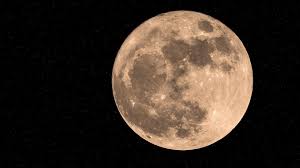This week’s full moon, the last full moon of winter, is known as the Worm Moon, not a very pretty name considering the reason it is called that.
As the last full moon of the winter season, this full moon in tradition, legend and lore signifies the ground is warming up and that means robins are returning from their winter migration south. The robins know that softened turf means plenty of worms for their diet and they’re eager to be back in the North for the warmer months.
That is the reason the Farmer’s Almanac for decades and other sources have always given for the Worm Moon name. However, more research has turned up that in the 1760, Capt. Jonathan Carver visited the Dakota and other Native American tribes and wrote that the name Worm refers to a beetle larva that begins to emerge from bark thawing on tree and other winter hideouts.
Each of the full moons has more than one name affixed to it, but the Worm Moon seems to have more than its share.
Since it generally appears within the 40 days before Easter, it is also called the Lenten Moon. It is called the Sap or Sugar Moon since it’s at the time of year to tap maple trees for their syrup. It is also known as the Crow Moon because of the crows who caw loudly and clearly signifying an end to winter.
It is known to some tribes as the Crest Moon because the snow that melts during the day turns to ice and creates a crest on the snow as it freezes. Some tribes call it the Sore Eyes Moon because of the glare of the blinding sun during the day reflecting off melting snow.
Whether name you prefer, it’s a brilliant bright light in the sky for the next few days before it begins to wane.
April’s full Moon rises on April 5 and is known as the Pink Moon, since it is the time of year when flowers begin to grow and the earth is colored with pink and other calming hues. It reaches its peak just after 12:30 a.m. the night of April 5, and it is bests seen from an open area as it rises just above the horizon. That’s when it will be at its largest and may also look like it has a golden color. Because of its proximity to Easter, it is also known as the Paschal moon, and this year it is the first full Moon of the spring season. Easter is always the first Sunday after the Paschal Full Moon.



